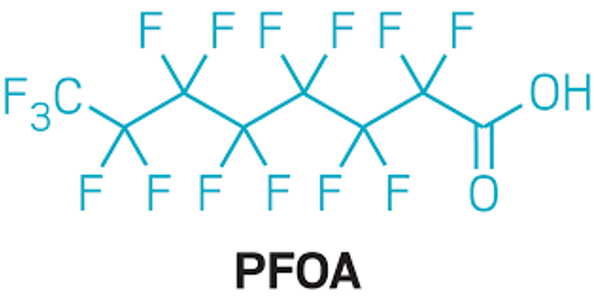Environmental Pollutant, PFOA, Associated with Increased Risk of Kidney Cancer
, by DCEG Staff
Per- and polyfluoroalkyl substances (PFAS), including perfluorooctanoic acid (PFOA), are a diverse class of synthetic chemicals used in commercial and industrial applications and are highly persistent in the environment. In the largest study to date on the associations of PFAS with kidney cancer risk, Jonathan Hofmann, Ph.D., M.P.H., tenure-track investigator in the Occupational Environmental Epidemiology Branch, and collaborators, found that study participants with the highest concentrations of PFOA in their blood serum were more than twice as likely to develop kidney cancer compared to those with the lowest concentrations. These findings were published in JNCI on September 18, 2020.
Previous studies have reported that PFOA is associated with increased risk of kidney cancer in populations highly exposed through their work or by living in areas with significant environmental contamination. The current study presents data from the Prostate, Liver, Colorectal, Ovarian (PLCO) Trial, a population with PFOA and PFAS concentrations comparable to those found in the U.S. general population. In this nested case-control study, the investigators analyzed PFOA and seven other PFAS in the pre-diagnostic blood serum of 324 study participants who developed kidney cancer and 324 matched controls. They found that the association between PFOA and kidney cancer persisted among participants diagnosed eight or more years after initial blood collection. The relationship was also observed among participants with normal kidney function, indicating that the relationship between PFOA and kidney cancer risk is independent of potential effects related to compromised kidney function.
These findings add to the weight of evidence that PFOA is a renal carcinogen and may have important public health implications for the many individuals exposed to this ubiquitous and highly persistent chemical in the U.S. and worldwide. Further research is needed to validate the findings of this study, particularly in diverse populations.
Reference
Shearer J, et al. Serum concentrations of per- and polyfluoroalkyl substances and risk of renal cell carcinoma. J Natl Cancer Inst, September 18, 2020. DOI: 10.1093/jnci/djaa143.
